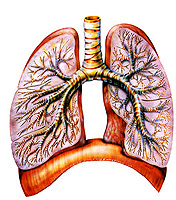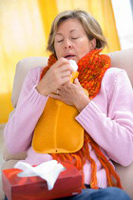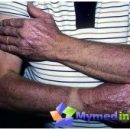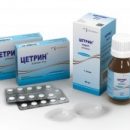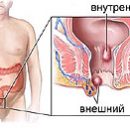What should be urgent assistance in apnea? What are the complications in children with apnea? What are the treatment and prevention?
Answers you will find in the article.
Content
Urgent help with apnea
Newborn or children in unconscious state or bluebells due to lack of oxygen,mo urgently make artificial respiration.
Description of apnea, reasons, adult people usually breathing even and rhythmic. At NovorDenities are often marked by a violation of the rhythm of breathing, it can be uneven, surface, is acceleratedor slowdown, can stopka breathing.
Under the apneetetic gap, or apneetetic episode, doctors understand the protracted paUz in breathing accompanied in the most severeCases falling cardiac activity and chaone hundred cyanosis (skin sinusiness, lips, nails, youa disadvantage of oxygen in the blood). During an apneethic episode, respiratory reflex is suppressed. In light cases, the respiratory pause is short-lived (from 10 to 15 seconds), and the child of the machinetically begins to breathe again. With more difficult situations, if there is no breathing for more than 20 seconds (or even less in premature), in the child in the bloodCapple carbon dioxide, and the flow of oxygenYes, there is no, which leads to resumption of breathNia. On the other hand, the child may lose withknowledge. Stop breathing (apnea) most oftenwalks during sleep. In fact, short apneeophical pauses are normal to determineNEO NEW Phasecongenital both in the docking and prematureNyu. However, most episodes of apnea during normal sleep short, and breathing is automatically restored again.
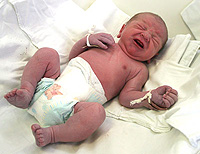 Apnea differs from periodic respiration, which develops for various reasons. PeriodiCapless breathing is characterized by deep breathFor 10-15 seconds and PauZoya at 5-10 seconds, and then again uneven deep breathing and again a pause. Pauses during periodic breathing shorter than with apnea. PeriodicHalya is most often associated with the awakening of reBenka; At the same time, sucks may occurfastest eye movements. The child's heart rate does not decrease. PeriodicStay breathing is less common than apnea, and much less dangerous. The tendency to apnea is observed in two groups of newborns. First Group - MonotoChanging babies born to 34 weekschange. During the first few days of life, most premature babies have a tendency to irregular breathing.
Apnea differs from periodic respiration, which develops for various reasons. PeriodiCapless breathing is characterized by deep breathFor 10-15 seconds and PauZoya at 5-10 seconds, and then again uneven deep breathing and again a pause. Pauses during periodic breathing shorter than with apnea. PeriodicHalya is most often associated with the awakening of reBenka; At the same time, sucks may occurfastest eye movements. The child's heart rate does not decrease. PeriodicStay breathing is less common than apnea, and much less dangerous. The tendency to apnea is observed in two groups of newborns. First Group - MonotoChanging babies born to 34 weekschange. During the first few days of life, most premature babies have a tendency to irregular breathing.
The likelihood of apnea in premature babies is the greater the less the time to wear the child and the less maturity centOral nervous system. With a strong premature(up to 30 weeks) probability of apnea episodes is very high. Any procedures or states youcalling the violation of the patency of the respiratory tract, may cause apnea.
Little children get limited quantityoxygen. As a result, long-term apneaethic intervals, for example, up to 30 seconds,Gut have a more pronounced effect on a littlea child than big.
Apnea is sometimes a consequence of pulmonary feeLevany. The most often children's apnea for the first time appears on the first or WTOswarm of the life of a premature baby and observedGives before reaching the age of docking reBenka. By this term, normal premature (in the absence of other diseases), apnea cases are usually terminated.
Sometimes children born in 34-42 weekschange, constant apnea is noted, starting from age b weeks and older. This is the so-called «Later apnea» Sometimes there may be a consequence of serious diseases, such as infections,Pads, congenital heart failure, anemia, meningitis or a gastroinphagal reflux (casting gastric content in the esophagus). In the treatment of these diseases or, in extreme cases, whenResearch Institute of the APNOE itself is disappeared into those1 year after it started.
Repeated episodes of apnea during the continuationtime can lead to a delayor even pose a threat to life. Longly observed late apnea can lead to a state requiring resuscitationEvents and threatening development of the syndrome of sudden death of newborns (SVS).
Premature newborn mustWe are in the intensive care department notdonosheny. While they grow and develop insocial incubators (cueway), their life functions, including heart rate and respiratory frequency, are under constant observationDenia. When a reduction in heart rate reducedCardiac monitor will give a beep. This signal may be combined with blueSkin Tank and Body Temperature ReductionSplit about apnea.
Later apnea is more often celebrated at home than in painNice. Unfortunately, parents are not always warningDena about the possibility of apnea in a dream in children. They may not notice temporary pauses in the child's breathing during sleep.
Parents usually do not seek urgent copperzinc help until they find a child at the time of the heavy episode of apnea and won't notice Bledor blue skin.
Complications in children with apnea
Complications of apnea depend on the age of the infant, the duration of the attacks and their frequency, the duration of the presence of apnea and itranks.
The reduced amount of oxygen coming into the lungs leads to an increase in the acidity of blood and tissues (acidosis) and reduce small arterial twigs in the lungs, as a result of which increases pressureblood in the lungs (pulmonary hypertension). Dueperand excessive use of oxygen at leApnea can lead to retrolental fibroplasia (eye damage, with the mostFull or part of which are developingnore detachment of the cornea and as a result of blindness). The risk of this disease can be reduced, constantly monitoring the level of oxygen in the child's blood. HeavyLoi and long apnea leads to brain damage and subsequently to cerebral paralysis. If a child occurs a heavy apneetetic episode of the house during sleep and remains unnoticed or artificial respiration is inefficient, thenNok may die.
Treatment apnea
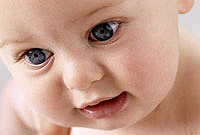 Treatment of apnea depends on the age of the patient child, the duration of the existence and duration of the attack of apnea and its causes, if it is known.
Treatment of apnea depends on the age of the patient child, the duration of the existence and duration of the attack of apnea and its causes, if it is known.
Child born under the age of 34 weeksbelt should be under observation in the intensive care unit. If the heart monitor registers the drop in the heart rate of less than 100 shots per minute, SIG soundsDash alarm. Careful medical intervention, such as a baby's finger blow, often happens tosufficient so that the child began to sleep again. (Incubator S «Water bed» or vibrating incubator can provide long-term, inherited respiration stimulation.) Sometimes more energyHigher actions, such as repeating timesDrazing Stop baby with fingers. With severe apneaethic episodes, in particular the duration of 30 to 45 seconds, the child may not respond to stimulation with touch. In these cases, before the end of the apneethic episode,Oral resuscitation bag or mask.
If the episodes of apnea are marked more than 2-3 times per hour or often and severe episodes occur,buzzing bags or masks needMO Fur Treatment. Reducing the temperature in the incubator, an increase in oxygen supply, diedblood can reduce the frequency of attacks. In rare cases, all these measures are ineffective, and the child needs artificial ventilation of the lungs.
In cases of late apnea, it is recommended to constantlyfor home observation while the child has endedThe attacks will not stop or will not succeedReach their reason. Under constant home onMeasuring is meant to constant respiratory and heartbeat frequency control. Treatment of apnea possible and folk remedies. In Moscow, there are many clinics that will be able to provide professional assistance in the treatment of apnea.
Prevention apnea
The likelihood of apnea will help reduce thorough prenatal conTroll, reducing the possibility of birtha naked child. The effects of apnea will helpRunning the constant observation of nurses in the hospital for children belonging to the risk group for this disease.



